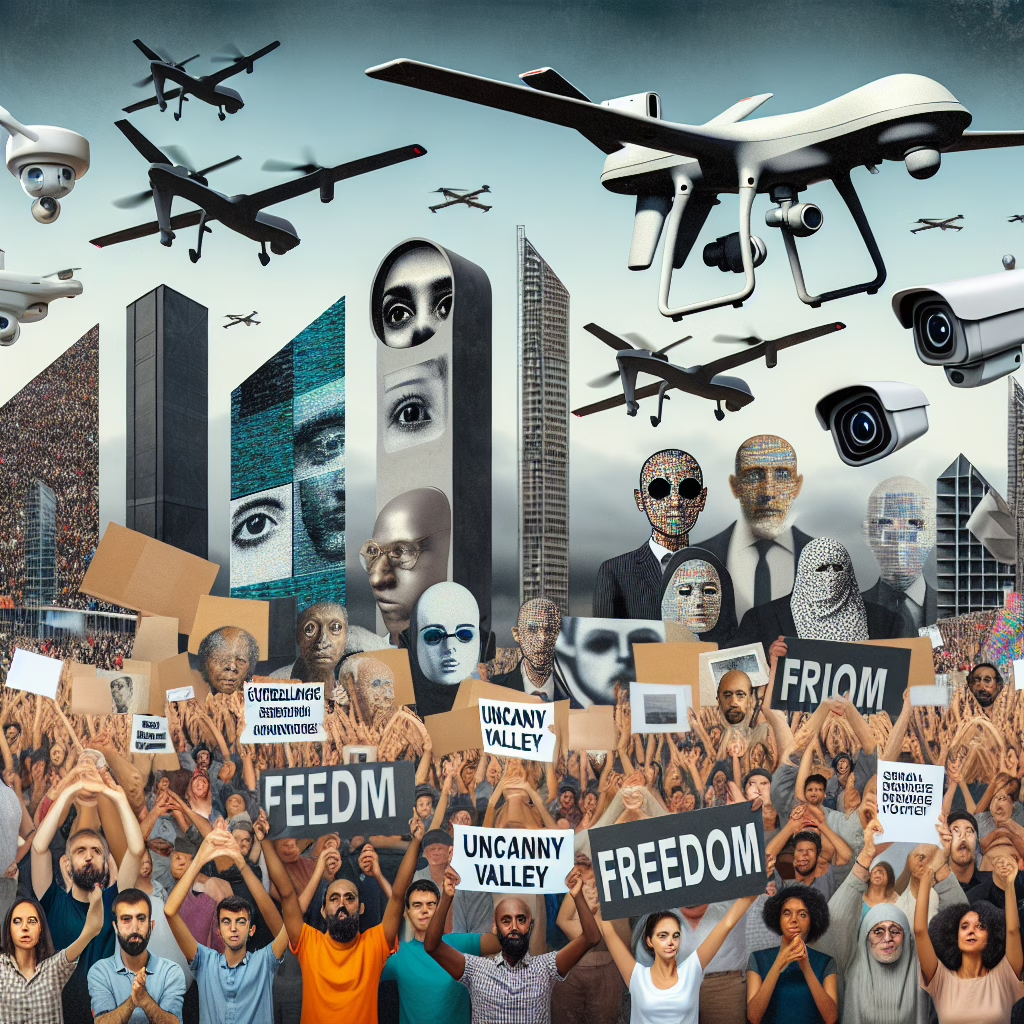In an age where our smartphones are practically glued to our hands, it seems we’ve entered a delightful dystopia where surveillance is the new black. The recent uncanny valley of how Americans are monitored during protests has brought forth some eyebrow-raising discussions. With technology evolving faster than your average cat video goes viral, it’s crucial to understand just how much we’re being watched and what that means for our rights.
Understanding the Uncanny Valley of Surveillance
The term uncanny valley usually refers to robots that look almost human but still give us the creeps. Imagine a humanoid figure that’s 90% there but still doesn’t quite cut it—it’s unsettling, right? Now apply that concept to surveillance. We have technology that can observe us in real-time, yet we often feel like we’re living in a sci-fi movie where our every move is tracked. This scenario raises serious questions about privacy and autonomy.
During protests, this monitoring ramps up like a barista on espresso. From drones buzzing overhead to facial recognition cameras strategically placed like overzealous security guards at a concert, it seems that the moment we raise our voices, Big Brother is listening (and watching). While some may argue that this is for our safety, others liken it to being under constant scrutiny—an experience akin to having a particularly judgmental relative at every family gathering.
The Technology Behind the Watchful Eyes
So what exactly does this surveillance technology entail? Well, imagine a cocktail party where facial recognition software mingles with crowd-sourcing apps, all while drones hover nearby like nosy neighbors peeking through your window. Yes, these tools can help identify potential threats during protests, but they also put us squarely in the crosshairs of scrutiny.
- **Facial Recognition Software**: This technology scans images in real-time, identifying individuals even in crowded spaces.
- **Drones**: Equipped with cameras, drones provide overhead views, often capturing footage of peaceful gatherings.
- **Predictive Policing Algorithms**: These systems analyze past events and social media trends to forecast where unrest might occur.
For instance, police departments across America have started using predictive policing algorithms. These systems analyze data from past events and current social media trends to forecast where trouble might brew next. It sounds like something out of a futuristic thriller—think “Minority Report” but with less Tom Cruise and more analytics dashboards.
And let’s not forget about social media! Platforms have become a double-edged sword, where one moment you’re sharing your lunch and the next you’re unwittingly providing data points for analysis by law enforcement agencies. Who knew that posting your avocado toast could lead to a police department’s predictive model?
Privacy Concerns Amidst Digital Oversight
As surveillance becomes more prevalent during protests, concerns about privacy have taken center stage. Many activists are asking: “What happened to our right to assemble without being monitored?” It feels a bit ironic when you think about it; we fight for freedom only to find ourselves on camera like stars in an unrequested reality show.
Moreover, the data collected during these events can be misused or mishandled. Just last year, reports surfaced about police departments storing information on peaceful protesters as if they were planning a heist rather than advocating for social change. This kind of overreach has sparked outrage and calls for stricter regulations surrounding surveillance practices.
Navigating the Fine Line Between Safety and Freedom
As we navigate this complex landscape, it’s essential to strike a balance between safety and freedom. After all, while we want to feel secure during public demonstrations, we also don’t want to live in a world where every dissenting voice is silenced by the watchful eyes of technology.
Ultimately, understanding the uncanny valley of surveillance is vital for empowering individuals in their quest for privacy rights. By staying informed and advocating for transparent policies, we can ensure that our voices aren’t just echoes in a monitored space but rather powerful calls for change.
Join the Conversation!
Your thoughts matter! How do you feel about surveillance during protests? Is it necessary for safety or an infringement on freedom? Share your opinions below!
A big thank you to Wired for shedding light on this pressing issue!

